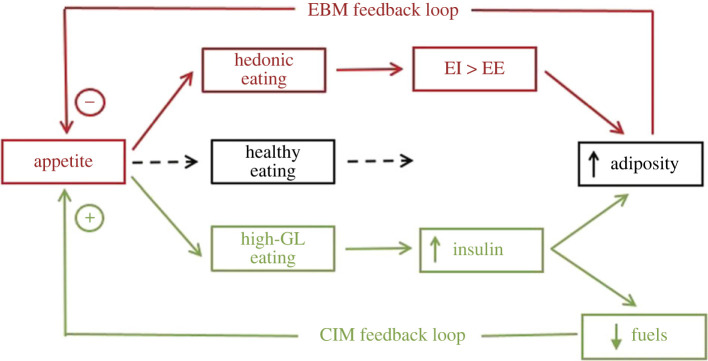Figure 3.
System diagram showing interacting controls of appetite and adiposity hypothesized by EBM (red) and CIM (green). In both models, obesity results from particular habitual dietary choices. In EBM, consumption of palatable, energy-dense foods in excess of energy needs (positive energy balance) leads to obesity, which then inhibits appetite. In CIM, intake of high-GL foods leads to insulin-induced lipogenesis independent of positive energy balance, which decreases circulating metabolic-fuel availability late after meals and stimulates appetite. Note that in EBM, but not CIM, adiposity is in the feedback loop controlling appetite. EI, energy intake; EE, energy expenditure; GL, glycemic load; fuels, circulating metabolic-energy substrates.

